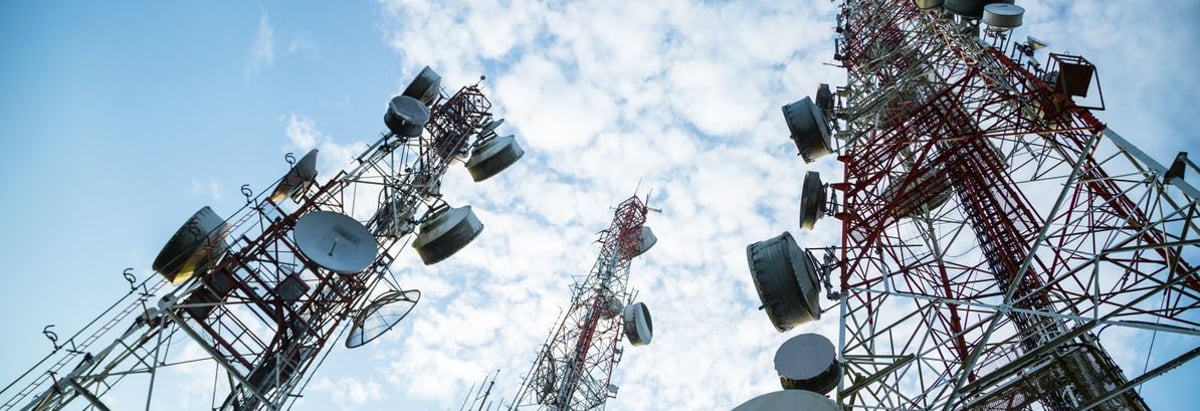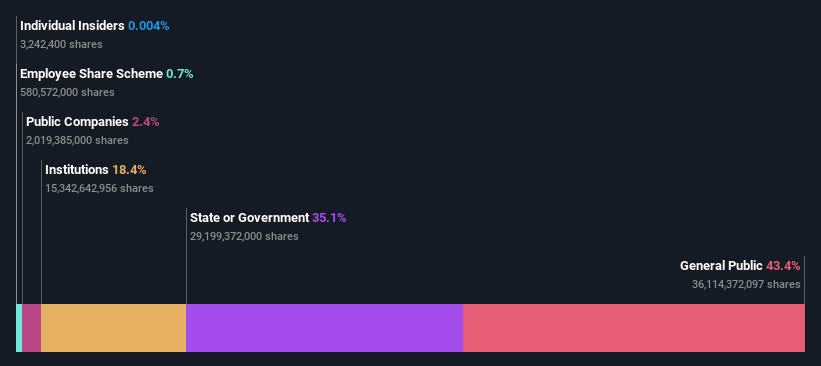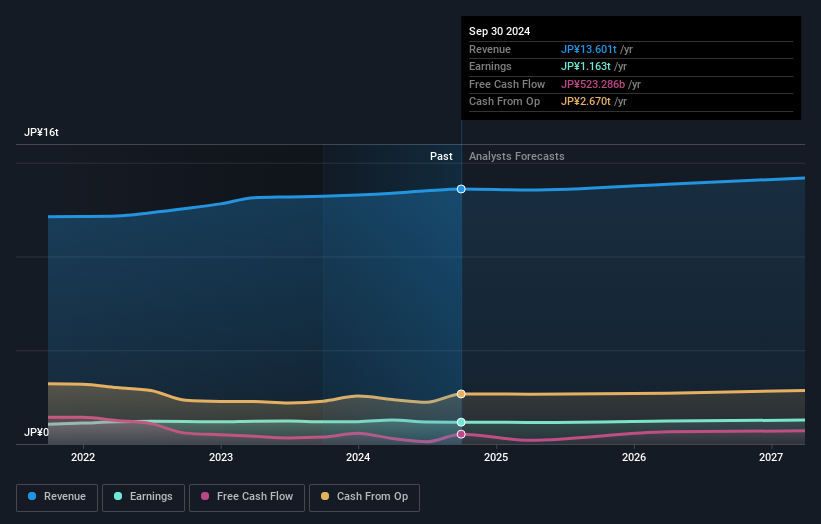- Japan
- /
- Telecom Services and Carriers
- /
- TSE:9432
Individual investors account for 43% of Nippon Telegraph and Telephone Corporation's (TSE:9432) ownership, while state or government account for 35%

Key Insights
- Nippon Telegraph and Telephone's significant individual investors ownership suggests that the key decisions are influenced by shareholders from the larger public
- A total of 13 investors have a majority stake in the company with 50% ownership
- Institutional ownership in Nippon Telegraph and Telephone is 18%
A look at the shareholders of Nippon Telegraph and Telephone Corporation (TSE:9432) can tell us which group is most powerful. With 43% stake, individual investors possess the maximum shares in the company. That is, the group stands to benefit the most if the stock rises (or lose the most if there is a downturn).
And state or government on the other hand have a 35% ownership in the company.
Let's take a closer look to see what the different types of shareholders can tell us about Nippon Telegraph and Telephone.
See our latest analysis for Nippon Telegraph and Telephone

What Does The Institutional Ownership Tell Us About Nippon Telegraph and Telephone?
Many institutions measure their performance against an index that approximates the local market. So they usually pay more attention to companies that are included in major indices.
We can see that Nippon Telegraph and Telephone does have institutional investors; and they hold a good portion of the company's stock. This suggests some credibility amongst professional investors. But we can't rely on that fact alone since institutions make bad investments sometimes, just like everyone does. It is not uncommon to see a big share price drop if two large institutional investors try to sell out of a stock at the same time. So it is worth checking the past earnings trajectory of Nippon Telegraph and Telephone, (below). Of course, keep in mind that there are other factors to consider, too.

Hedge funds don't have many shares in Nippon Telegraph and Telephone. Our data shows that Ministry of Finance Japan is the largest shareholder with 35% of shares outstanding. Meanwhile, the second and third largest shareholders, hold 2.6% and 2.4%, of the shares outstanding, respectively.
A closer look at our ownership figures suggests that the top 13 shareholders have a combined ownership of 50% implying that no single shareholder has a majority.
While it makes sense to study institutional ownership data for a company, it also makes sense to study analyst sentiments to know which way the wind is blowing. Quite a few analysts cover the stock, so you could look into forecast growth quite easily.
Insider Ownership Of Nippon Telegraph and Telephone
The definition of an insider can differ slightly between different countries, but members of the board of directors always count. Company management run the business, but the CEO will answer to the board, even if he or she is a member of it.
Insider ownership is positive when it signals leadership are thinking like the true owners of the company. However, high insider ownership can also give immense power to a small group within the company. This can be negative in some circumstances.
Our information suggests that Nippon Telegraph and Telephone Corporation insiders own under 1% of the company. Being so large, we would not expect insiders to own a large proportion of the stock. Collectively, they own JP¥502m of stock. It is good to see board members owning shares, but it might be worth checking if those insiders have been buying.
General Public Ownership
The general public, who are usually individual investors, hold a 43% stake in Nippon Telegraph and Telephone. While this size of ownership may not be enough to sway a policy decision in their favour, they can still make a collective impact on company policies.
Next Steps:
It's always worth thinking about the different groups who own shares in a company. But to understand Nippon Telegraph and Telephone better, we need to consider many other factors. To that end, you should be aware of the 1 warning sign we've spotted with Nippon Telegraph and Telephone .
If you are like me, you may want to think about whether this company will grow or shrink. Luckily, you can check this free report showing analyst forecasts for its future.
NB: Figures in this article are calculated using data from the last twelve months, which refer to the 12-month period ending on the last date of the month the financial statement is dated. This may not be consistent with full year annual report figures.
Valuation is complex, but we're here to simplify it.
Discover if Nippon Telegraph and Telephone might be undervalued or overvalued with our detailed analysis, featuring fair value estimates, potential risks, dividends, insider trades, and its financial condition.
Access Free AnalysisHave feedback on this article? Concerned about the content? Get in touch with us directly. Alternatively, email editorial-team (at) simplywallst.com.
This article by Simply Wall St is general in nature. We provide commentary based on historical data and analyst forecasts only using an unbiased methodology and our articles are not intended to be financial advice. It does not constitute a recommendation to buy or sell any stock, and does not take account of your objectives, or your financial situation. We aim to bring you long-term focused analysis driven by fundamental data. Note that our analysis may not factor in the latest price-sensitive company announcements or qualitative material. Simply Wall St has no position in any stocks mentioned.
About TSE:9432
Nippon Telegraph and Telephone
Operates as a telecommunications company in Japan and internationally.
Good value average dividend payer.
Similar Companies
Market Insights
Community Narratives




